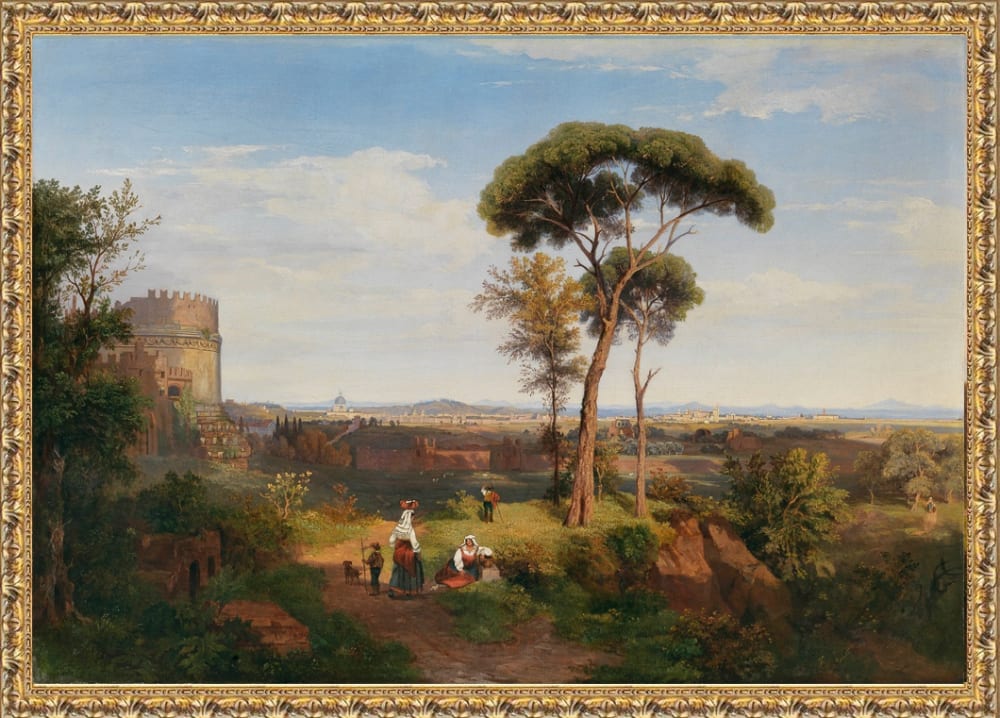

THOMAS DESSOULAVY London 1801-Rome 1869
Literature
Roberto Borgia, Visioni di Tivoli in «Notiziario Tiburtino», 12 December 2014, pp. 10-11.
Massimo Ricciardi, Paesaggisti stranieri in Campania nell’Ottocento, Rome, De Luca, 2002.
Thomas Dessoulavy was born in London 1801 but he moved to Rome at a very early age, staying with celebrated Swiss watercolourist Franz Kaiserman. Swiss sculptor Heinrich Keller lists him among the “landscape painters” in his Elenco drafted in 1824. Dessoulavy’s views portray not only the landscapes of Latium but also certain areas in Campania. He had already visited Naples by the late 1820s and he collaborated with the brothers Pietro and Achille Parboni, providing a print of a landscape of the Salento region for the Raccolta delle Vedute del Regno di Napoli which they published in Parma in 1828.
Dessoulavy, who spoke fluent Italian and was thus very much in demand with British visitors as a local guide, had become one of the most successful British artists in Rome by the early 1830s. He showed his work in the annual exhibition held by the Società degli Amatori e Cultori di Belle Arti in Rome for the first time in 1839, while in 1846 he sent the Royal Academy in London a View of the Palace of the Caesars. The following year he showed a Landscape at the Royal Academy, and again in 1848 he submitted to it a painting depicting The Gate of San Giovanni in Rome. Despite making frequent trips to England, primarily for purposes connected with his work and chiefly between the mid-1840s and ’50s, he chose to live stably in Rome until his death in 1869.
This view on display here belongs to the 19th century landscape genre so beloved of the colonies of foreign artists then residing in Italy. The picture shows Rome with the Tomb of Cecilia Metella on the left and the feature of travellers depicted in the foreground.
Dessoulavy’s style owes a huge debt to the trend in Italian landscape painting that revisited style of the Venetian masters of the genre while imbuing it with a markedly picturesque tone. Using the brush to dab his paint on the canvas, Dessoulavy meticulously reproduces the foliage, grass and figures in the foreground, while the elements in the background betray a more stylised rendering of form. He also devotes a great deal of attention to topographical accuracy, a feature that was to characterise his entire artistic output.
Join the mailing list
Subscribe to our newsletter to receive all the news about exhibitions, fairs and new acquisitions!